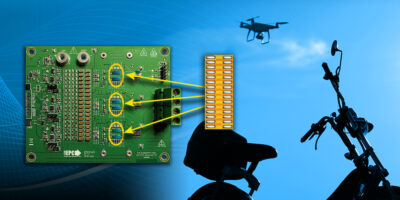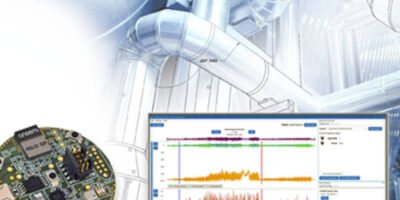Equipped with low power modes to enable AI-based, always-on user experiences, the OV32C sensor is OmniVision’s first RGBC (colour sense) sensor. The
32Mpixel image sensor is in a compact 1/3.2-inch optical format which is suitable for front-facing mobile phones’ selfie cameras. The colour sense technology is claimed to provide the highest quality images in challenging lighting conditions. The OV32C’s low power modes can help enable always-on user experiences by facilitating AI processing to automate many of the common tasks of the camera, such as face detection and QR code scans.
The OV32C is built on OmniVision’s 0.7 micron PureCel Plus-S pixel technology to squeeze 32Mpixels into a 1/3.2-inch OF. RGBC technology uses a four-cell colour filter pattern with clear pixels and on-chip RGBC-to-Bayer fusion. It supports CPHY and DPHY interfaces and can output 15 frame rates per second (fps) at 32Mpixel, or 30 frames per second at 8Mpixels with on-chip fusion. The OV32C also offers dual DOVDD support at 1.8 and 1.2V.
“Image sensors for front facing (selfie) cameras are expected to grow 4.7 per cent CAGR over the next five years, with smartphone front camera image sensor revenues reaching US$4.4 billion by 2026,” says Pierre Cambou, principal analyst, Imaging at Yole Développement. “Stacking technology is giving more degree of freedom to image sensor designers to embed advanced pre-ISP algorithms . . . . solving the difficulties of their non-Bayer arrangement. Adding ‘always-on’ smart capabilities to phone cameras will bring a new level of ergonomics and performance to the phone’s user interface,” he said.
The OV32C addresses the limited space challenge of a front facing camera module by providing 1/2.8-inch pixel size performance in the 1/3.2-inch OF. Arun Jayaseelan, staff marketing manager at OmniVision, comments: “The OV32C is our first sensor for the mobile phone market to feature RGBC―providing a 50 per cent boost in overall sensitivity to enhance low-light image quality”. The company has also reduced design complexity for OEMs with an on-chip RGBC-to-Bayer fusion algorithm, so that a separate RGBC processing unit is not required.
OmniVision says that the OV32C offers fast access to camera functionality at all times. The low power modes help enable always-on features optimising the phone’s back-end AI applications, minimising power and data rate usage.
Samples of the OV32C are available now.







